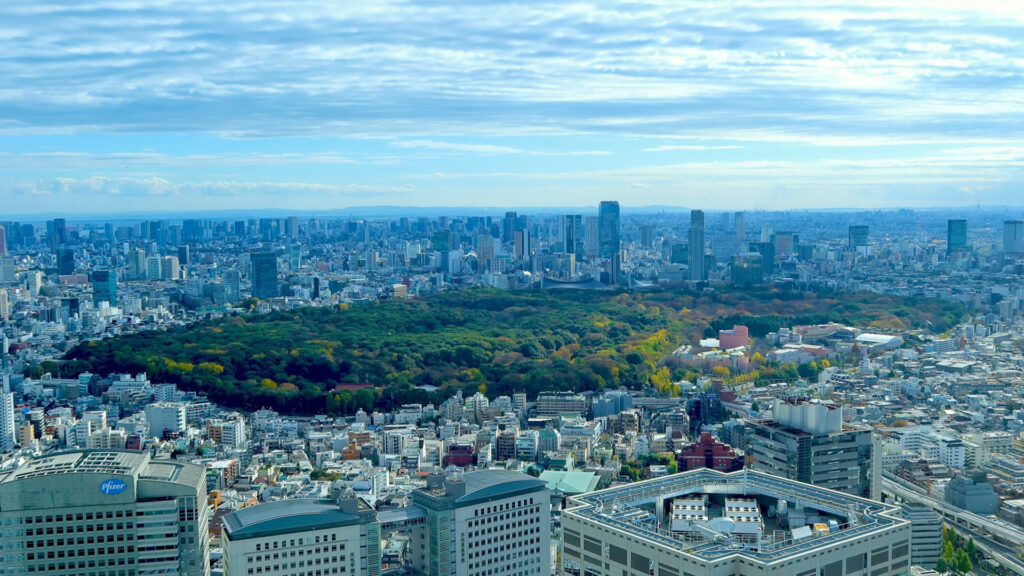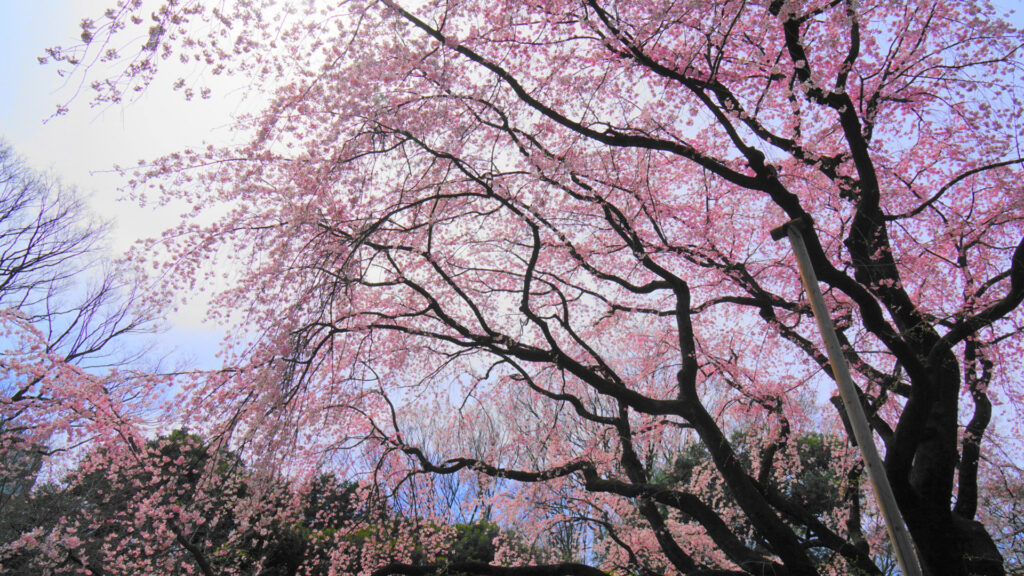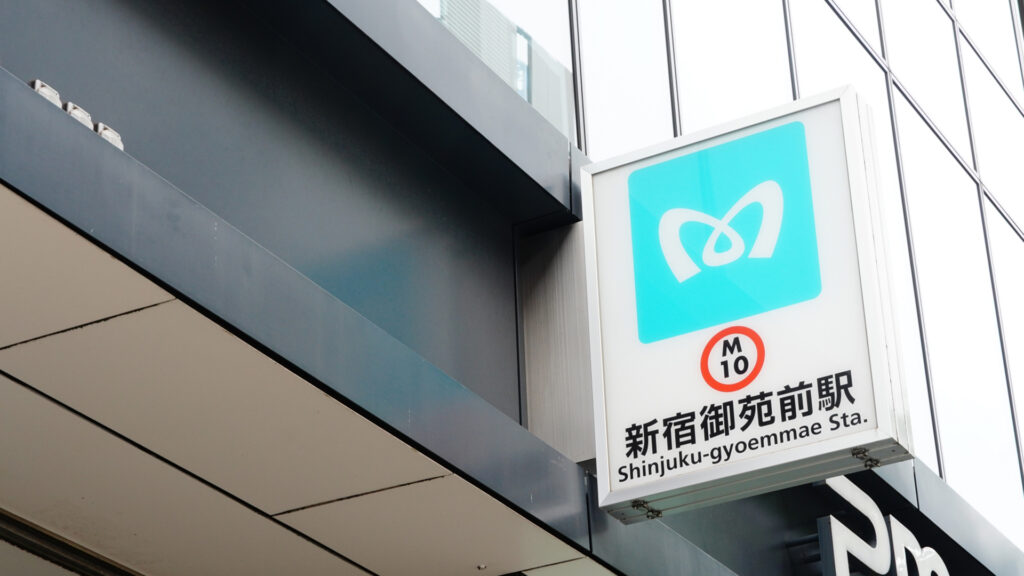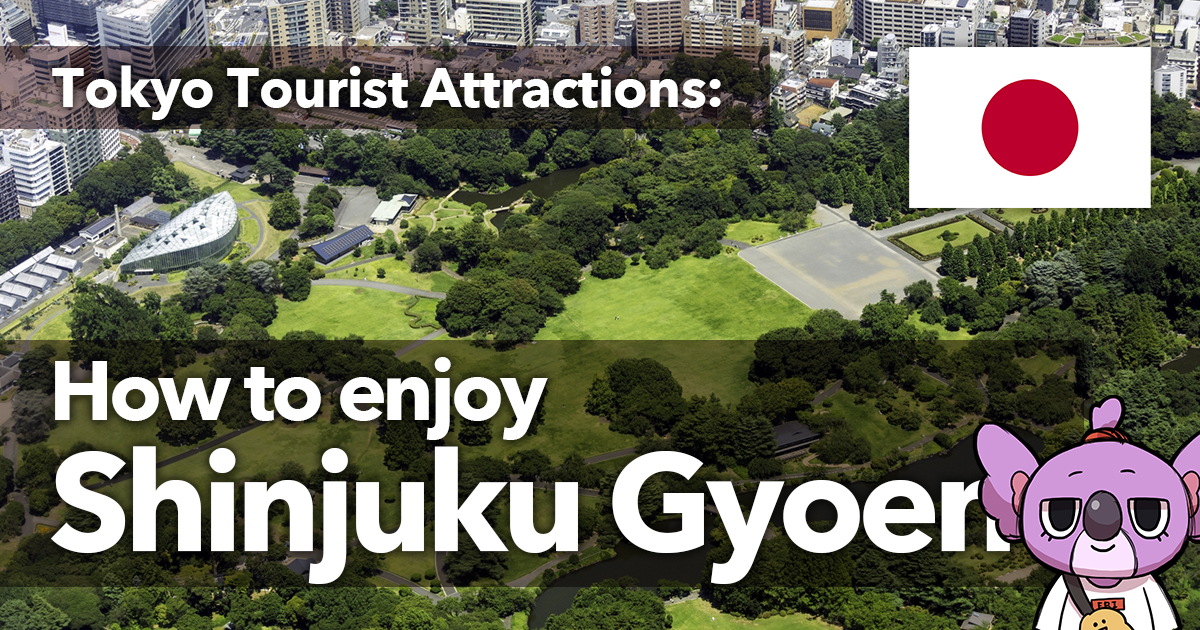Introduction

Shinjuku Gyoen is a vast garden located in the heart of Tokyo, and is a popular tourist destination where visitors can enjoy the beautiful scenery of the four seasons. Covering an area of approximately 58.3 hectares, the garden was originally established as an imperial garden during the Meiji period (1868-1912) and opened to the public in 1949. It is a fusion of three different styles of gardens: a Japanese garden, a French-style formal garden, and an English landscape garden, each with its own unique charm.
The main attraction of Shinjuku Gyoen is its diverse nature. In spring, approximately 1,000 cherry trees are in full bloom, attracting many visitors as a cherry blossom viewing spot. In summer, fresh greenery is beautiful and visitors can cool off by the pond. In the fall, the autumn foliage colors the garden, making it a great place to take pictures. In winter, visitors can enjoy the tropical plants in the greenhouse in a tranquil setting.
Shinjuku Gyoen is also a tranquil place where visitors can forget the hustle and bustle of the city. The garden has spacious lawns, ponds, and flower beds, perfect for strolling and picnicking. Families with children, couples, and friends can enjoy visiting the garden in a variety of ways.
This article provides detailed information on how to enjoy Shinjuku Gyoen to its fullest. We will tell you when the best time to visit, what to see, how to get there, and other information to help you have a wonderful experience at Shinjuku Gyoen. Enjoy a special moment at Shinjuku Gyoen and experience the nature and history of Tokyo.
History and Culture of the Sightseeing Spot

Located in the heart of Tokyo, Shinjuku Gyoen is extremely rich in history and culture. This garden was originally used as a subordinate residence of the Naito family during the Edo period. In the Meiji period (1868-1912), the garden was developed as an imperial garden and used by the imperial family for recreation and as a place for entertaining guests. In particular, it was also used as an agricultural experiment station in 1886, contributing to the improvement of agricultural technology.
Opened to the public in 1949, Shinjuku Gyoen became a garden widely loved by the public. The garden is a fusion of three different styles: a Japanese garden, a French-style landscaped garden, and an English landscape garden, each with its own unique charm. The Japanese garden is a serene and tranquil place with a traditional teahouse, pond, and stone lanterns. The French-style garden features a symmetrical design and beautiful flowerbeds, especially in spring and fall, when the garden is filled with colorful flowers. The English landscape garden offers spacious lawns and natural landscaping, perfect for a relaxing stroll.
One of the cultural features of Shinjuku Gyoen is its diverse vegetation. With over 20,000 trees, including approximately 1,500 cherry trees, the garden offers beautiful scenery in all four seasons. It is worth visiting throughout the year: cherry blossoms in the spring, fresh greenery in the summer, autumn leaves in the fall, and tropical plants in the greenhouse in the winter.
Furthermore, Shinjuku Gyoen is an important place for nature conservation and environmental education. The garden is home to many wild birds and insects, maintaining a rich ecosystem in an urban setting. In addition, the greenhouses display plants from the tropics and subtropics, showing visitors the diversity and beauty of nature.
Shinjuku Gyoen is a special place where history, culture, and nature are in harmony. By visiting, visitors can experience Japanese tradition, modern garden design, and the abundance of nature. Spend some quiet time while understanding the history and culture of this garden.
Places to visit
Shinjuku Gyoen is an attractive tourist destination for its beautiful seasonal scenery and diverse garden styles. Here are some suggested times to visit, main attractions, and things to keep in mind when sightseeing.
Suggested times of year to visit
The best times to visit Shinjuku Gyoen are spring and fall. In spring (March to May), approximately 1,000 cherry trees are in full bloom, making it a popular hanami (cherry blossom viewing) spot for many tourists. Autumn (October to November) is the best time to stroll through the garden, as the autumn leaves beautifully decorate the garden. In addition, fresh greenery is beautiful in summer, and in winter, visitors can enjoy tropical plants in the greenhouse.
Major tourist attractions and popular places to visit.
Japanese Garden
- Old Goryotei: A tea ceremony room with Chinese-style architecture, where you can enjoy a quiet moment with a view of the beautiful garden and pond.
- Mother and Child Forest: An area of rich nature, popular with families with children. A variety of flora and fauna can be observed here.
French-style landscaped garden.
- Flower Garden: An area planted with colorful flowers, especially beautiful in spring and fall. This is an ideal spot for taking pictures.
English Landscape Garden
- Spacious lawn area: perfect for picnics, leisurely strolls, and relaxing moments.
- Grand Conservatory: Tropical and subtropical plants are on display, providing warmth and botanical interest even in winter. Many rare plants can be seen here.
Points of Attention at Sightseeing Spots
When visiting Shinjuku Gyoen, please note the following points.
- Restrictions on Eating and Drinking: Eating and drinking are restricted in the park, except in certain areas. Please eat and drink only in designated picnic areas.
- Take your trash home: There are no trash cans in the park, so please be sure to take your trash home with you. We ask for your cooperation in protecting the environment.
- Pets are not allowed: Pets are not allowed in Shinjuku Gyoen. Guide animals (guide dogs, hearing dogs, and service dogs) are exceptions.
- Photo Manners: The Shinjuku Gyoen is particularly crowded during the cherry blossom and autumn foliage seasons, so please be considerate of the people around you when taking photos and do not block the path.
Shinjuku Gyoen offers visitors a relaxing moment with its beautiful nature and quiet environment. Please take note of these highlights and precautions to enjoy a wonderful visiting experience.
Access
Access to Shinjuku Gyoen is very convenient from all major transportation systems in Tokyo. Below are specific access options from Tokyo Station, Narita Airport, and Haneda Airport.
Access from Tokyo Station

In case of using train.
- JR Chuo Line: Take the JR Chuo Line rapid train from Tokyo Station to Shinjuku Station. It takes about 15 minutes. From the South Exit of Shinjuku Station, it is approximately a 10-minute walk to Shinjuku Gyoen.
- Tokyo Metro Marunouchi Line: From Tokyo Station, take the Tokyo Metro Marunouchi Line and get off at Shinjuku-Gyoenmae Station. It takes about 20 minutes. From Shinjuku-Gyoenmae Station, it takes about 5 minutes on foot to reach Shinjuku-Gyoen.
Access from Narita Airport
If you take the train
- Narita Express (N’EX): Take the JR Narita Express train from Narita Airport to Shinjuku Station. The trip takes about 90 minutes. From the South Exit of Shinjuku Station, it is approximately a 10-minute walk to Shinjuku Gyoen.
- Keisei Skyliner and JR Yamanote Line: From Narita Airport, take the Keisei Skyliner to Nippori Station, transfer to the JR Yamanote Line and get off at Shinjuku Station. The trip takes about 75 minutes. From the South Exit of Shinjuku Station, it is approximately a 10-minute walk to Shinjuku Gyoen.
By bus
- Limousine Bus: Take a limousine bus from Narita Airport to Shinjuku Station West Exit. The trip takes about 120 minutes. It takes about 15 minutes to reach Shinjuku Gyoen on foot from the West Exit of Shinjuku Station.
Access from Haneda Airport
If you take the train
- Tokyo Monorail and JR Yamanote Line: Take the Tokyo Monorail from Haneda Airport and get off at Hamamatsucho Station. From Hamamatsucho Station, transfer to the JR Yamanote Line and get off at Shinjuku Station. It takes about 45 minutes in total. From the South Exit of Shinjuku Station, it takes about 10 minutes to reach Shinjuku Gyoen on foot.
- Keikyu Line and Toei Subway Shinjuku Line: From Haneda Airport, take the Keikyu Line to Shinagawa Station. From Shinagawa Station, transfer to the JR Yamanote Line and get off at Shinjuku Station. It takes about 50 minutes in total. From the South Exit of Shinjuku Station, it is approximately a 10-minute walk to Shinjuku Gyoen.
If you take the bus
- Limousine Bus: Take a limousine bus from Haneda Airport to Shinjuku Station West Exit. The trip takes about 60 minutes. From the West Exit of Shinjuku Station, it takes about 15 minutes to reach Shinjuku Gyoen on foot.
Hours of Operation, Admission Fees
When visiting Shinjuku Gyoen, it is important to check information about operating hours and admission fees in advance. Below are details on Shinjuku Gyoen’s hours of operation and admission fees.
Hours of Operation
The Shinjuku Gyoen’s regular hours of operation are as follows:
- March 15 through September 30: 9:00 am to 6:00 pm (last admission at 5:30 pm)
- October 1 to March 14: 9:00 a.m. to 4:30 p.m. (last admission at 4:00 p.m.)
The park is closed on Mondays (if Monday is a national holiday, the park is closed the following day) and during the year-end and New Year holidays (December 29 through January 3). However, during special opening periods, the park is open on Mondays.
Admission Fees
Admission fees to Shinjuku Gyoen are as follows:
- Adults (15 years and older): 500 yen
- 65 years old and over: 250 yen (ID required)
- Junior high school students and younger: Free (certificate required)
- Person with disability certificate and one caregiver: Free (certificate required)
Group discounts are also available: for groups of 30 or more, the price is 400 yen for adults and 200 yen for those aged 65 and older.
Other Information
- Annual Passport: For more frequent visitors, annual passports are also available. Adults can purchase one for ¥2,000 and ¥1,000 for those 65 and older.
- Free Wi-Fi: Free Wi-Fi is available throughout the park, allowing visitors to search for information using smartphones and tablets.
- Guided Tours: Guided tours are offered periodically at Shinjuku Gyoen. Please check the official website for detailed schedule and how to apply.
Summary

Shinjuku Gyoen is a vast garden located in the center of Tokyo, and is a popular tourist destination where visitors can enjoy the beautiful scenery of the four seasons. Originally developed as an imperial garden during the Meiji period (1868-1912) and opened to the public in 1949, the garden is a fusion of three styles: Japanese garden, French-style formal garden, and English landscape garden. Cherry blossoms in the spring and autumn leaves in the fall make these seasons the best times to visit.
Highlights include the former Goryotei (Japanese-style garden), the flowerbed plaza in the French-style garden, and the spacious lawn area in the English landscape garden. Especially during the cherry blossom season, the area is crowded with tourists and makes an excellent photo spot. Visitors can also enjoy tropical plants in the large greenhouse throughout the year.
Access is also very convenient. From Tokyo Station, take the JR Chuo Line or Tokyo Metro Marunouchi Line and get off at Shinjuku Station or Shinjuku-Gyoenmae Station. It is also easily accessible from Narita and Haneda Airports by train or bus. Hours of operation vary by season, with the park open from 9:00 a.m. to 6:00 p.m. from March 15 to September 30, and from 9:00 a.m. to 4:30 p.m. from October 1 to March 14. Admission is 500 yen for adults, 250 yen for those 65 and older, and free for junior high school students and younger.
Shinjuku Gyoen is a tranquil place where visitors can forget the hustle and bustle of the city and enjoy the abundant nature and beautiful gardens. There are restrictions on eating and drinking areas in the garden, so be sure to enjoy eating and drinking only in designated areas. In addition, you must take your garbage home with you, and pets are not allowed. A visit to Shinjuku Gyoen will make your trip to Tokyo even more special.



